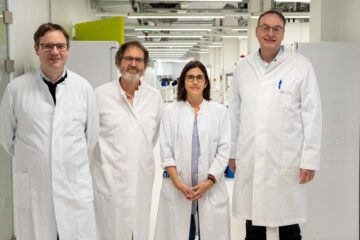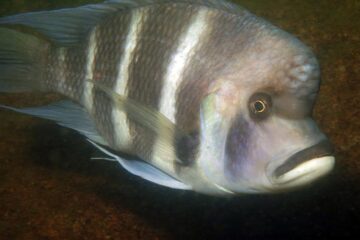New biosensor can detect bacteria instantaneously

“We have developed a new biosensor that can detect extremely low concentrations of bacteria immediately, easily and reliably”, F. Xavier Rius, lead author of the study and a professor in the Chemometrics, Qualimetrics and Nanosensors research group in the Analytical Chemistry and Organic Chemistry Department of the URV, tells SINC.
Rius' team, jointly led by Jordi Riu, has come up with a technique that can detect extremely low levels of the bacteria Salmonella typhi, which causes typhoid fever. This new biosensor functions using a method, described this month in the scientific journal Angewandte Chemie International Edition, which involves carbon nanotubes with inbuilt aptamers providing electrochemical readings.
The aptamers are small fragments of artificial DNA or RNA designed to attach themselves specifically to a particular molecule, cell or micro organism, in this case Salmonella. If the bacteria are not present, the aptamers remain on the walls of the carbon nanotubes. However, if they detect bacteria, they become activated and stick to it, and the carbon nanotubes generate an electric signal that is picked up by a simple potentiometer connected to the biosensor.
“The presence of the bacteria sparks a change in the interaction between the aptamers and the nanotubes, which takes place in a few seconds and creates an increase in the voltage of the electrode”, says Rius.
Traditional methods for identifying and measuring micro organisms require one or two days' analysis. “This technique means small quantities of micro organisms can be detected simply and practically in real time, just the same as measuring the pH of water”, adds the researcher.
This study is part of the international research being carried out to find the most effective and fast ways of detecting all kinds of pathogens. The new biosensor makes it possible to identify a single cell of Salmonella in a five-millilitre sample and can successfully make quantitative measurements of up to 1,000 bacteria per millilitre.
References:
Gustavo A. Zelada-Guillén, Jordi Riu, Ali Düzgün, F. Xavier Rius. “Immediate Detection of Living Bacteria at Ultralow Concentrations Using a Carbon Nanotube Based Potentiometric Aptasensor”. Angewandte Chemie International Edition, Septiembre de 2009. DOI: 10.1002/anie.200902090.
Media Contact
More Information:
http://www.plataformasinc.esAll latest news from the category: Life Sciences and Chemistry
Articles and reports from the Life Sciences and chemistry area deal with applied and basic research into modern biology, chemistry and human medicine.
Valuable information can be found on a range of life sciences fields including bacteriology, biochemistry, bionics, bioinformatics, biophysics, biotechnology, genetics, geobotany, human biology, marine biology, microbiology, molecular biology, cellular biology, zoology, bioinorganic chemistry, microchemistry and environmental chemistry.
Newest articles

Efficient, sustainable and cost-effective hybrid energy storage system for modern power grids
EU project HyFlow: Over three years of research, the consortium of the EU project HyFlow has successfully developed a highly efficient, sustainable, and cost-effective hybrid energy storage system (HESS) that…

How immune cells communicate to fight viruses
Chemokines are signalling proteins that orchestrate the interaction of immune cells against pathogens and tumours. To understand this complex network, various techniques have been developed to identify chemokine-producing cells. However,…

Curiosity promotes biodiversity
Cichlid fishes exhibit differing degrees of curiosity. The cause for this lies in their genes, as reported by researchers from the University of Basel in the journal Science. This trait…





















